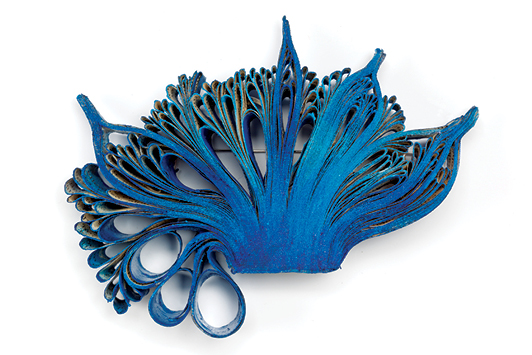
Who would have thought England’s great Renaissance man, Prince Albert, was an accomplished jewelry designer? It’s one of the secrets historian Clare Phillips reveals in her book
Jewels and Jewellery, which offers significant insights into one of the world’s most spectacular collections.
London’s Victoria and Albert Museum — aka the V&A — holds breathtaking gold and gem-set jewels that are thousands of years old, though the book starts off with treasures and techniques from the Middle Ages. Given the museum’s name and location, the jewel in its personal crown was bound to be the diamond and sapphire coronet Albert designed for Queen Victoria. There is a fascinating history behind this 2017 acquisition, which went on display when the William and Judith Bollinger gallery reopened in April after undergoing refurbishment.
Albert spent the first years of his marriage to the young Victoria reviewing her ancestral gems to see how they might be remade. In 1843, he commissioned royal jewelers Kitching and Abud to create a coronet from stones she had received from her uncle William IV, incorporating elements of Albert’s own coat of arms. The queen enjoyed the tiny crown for just 16 years before she became a widow and gave up colored stones while in mourning — but it was the piece she wore to reopen Parliament after spending five years out of the public eye.
Crown jewels on display to the public are especially noteworthy in a country where the first Stuart monarch, James I, largely sold off the nation’s medieval and Tudor treasures, and the remainder were sold or pawned in the mid-17th century to raise money for the Royalists during England’s Civil War. It was money well invested, the book notes; the faction was instrumental in the Restoration, which saw Charles II seek to recover older pieces and commission new regalia to replace previous monarchs’ destroyed crowns.
Delving into diamonds
Diamonds — originally prized for perceived magical qualities and ground into powder as a much-feared poison during the Middle Ages — only came into their own in Europe during the Renaissance, Phillips reveals. It was the development of faceting that showcased the ornamental potential of the stone. The rose cut, popular in the 1620s, gave way to the brilliant cut, which was introduced in the late 17th century and remains the most popular today. Along with the discovery of new deposits in Brazil, it was responsible for the surge in diamond jewelry during the 18th century.
With the serial exhaustion of the Indian and Brazilian mines that first fueled diamond demand, new sources have since been tapped in Russia, Australia and Canada, as well as Africa, which has been yielding up diamonds to the jewelry trade since 1866, Phillips writes.
Accepting substitutes
Perversely, the rage for diamonds in the 18th century also saw the rise of paste, which was perceived as less risky to display on Europe’s mean streets — although the real thing was de rigueur for court dress. Those who could not manage diamonds or gold found creative alternatives around the turn of the 19th century, Phillips explains, in base metals as well as stones. Cut steel came into fashion, as did cast iron. One of the most interesting categories she documents is Berlin iron. Resembling black lace, it stood in for the gold that patriotic Prussians had been urged to give up to fund the war against Napoleon. Elsewhere in Europe, jewelry designers were experimenting with a plethora of stones that were becoming readily available for the first time, from amethyst to garnet, peridot to topaz and turquoise. The resulting multi-gem bouquets became the forerunners of the tutti-frutti style.
In contemporary ornaments, industrial and commonplace materials such as cord, crochet, silver mesh, bone and even elastic have dented the dominion of precious stones and metals. But singer Beyoncé has helped keep the diamond flag waving, gifting the V&A the Papillon ring that designer Glenn Spiro created for her. The green-tsavorite and diamond wings can flutter with the wave of a finger, thanks to a diamond-set band mechanism above the knuckle. The book shows her wearing the ring in a portrait snapped by her husband and fellow musician Jay-Z.
Unafraid to experiment
Designers only started putting their names on their pieces around the turn of the 20th century, leading to a greater focus on the jewels’ creators, according to V&A curator Richard Edgcumbe. Along with world-class designers from the past 50 years, the museum hosts items by earlier artists such as René Lalique, Georges Braque and Alexander Calder, who were known primarily for their work in other media.
Experimentation has also been championed. Phillips’s book shows a 1925 image of British aristocrat Lady Cory wearing bodice ornaments with diamonds mounted on watch springs to make them tremble. And a wooden ring-box carved as a pair of clasped hands holds the head-shaped chalcedony and gold ring designer Charlotte de Syllas created in the 1960s, when jewelry was redefining itself as “sculpture to wear.”
Jewels and Jewellery is published by Thames & Hudson.
Image:
Flóra
Vági/Victoria and Albert Museum
Article from the Rapaport Magazine - August 2019. To subscribe click here.